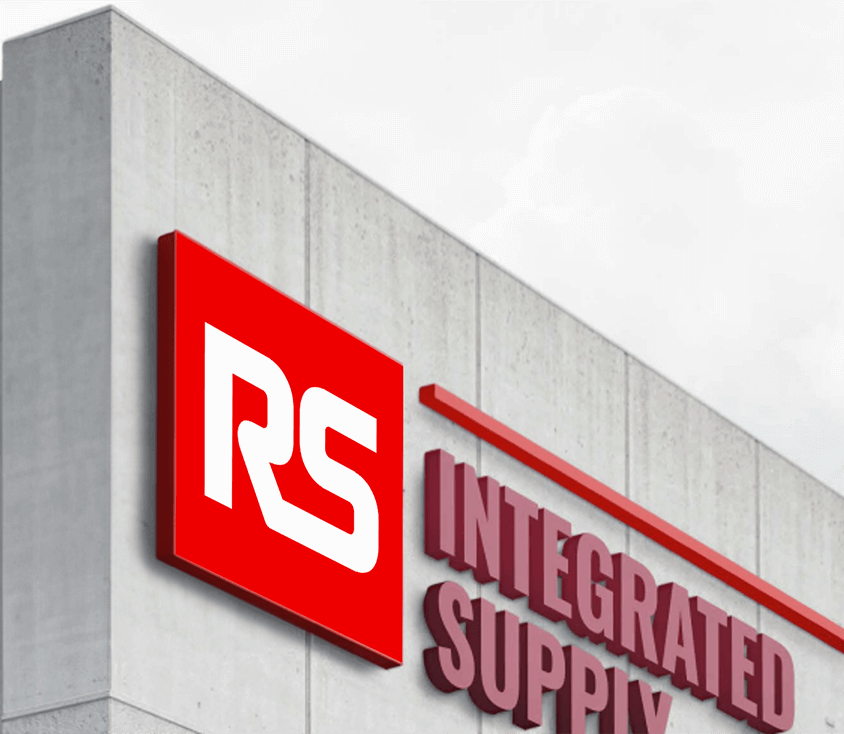Topics Covered
- Importance of MRO integrated services in facilities management?
- What types of facilities utilize integrated services – and why?
- How do you measure the value that integrated supply chain management services bring to a facility?
- A dvice to company considering MRO integrated services into their facilities?
Tags
Published on
Read time: 6 minutes

Integrated supply chain management services are typically associated with large industrial manufacturing operations where productivity is measured in terms of output and the availability of spare parts is therefore critical. The same services can, however, also be of use in facilities management settings where productivity is measured by the maintenance team’s efficiency.
Here we put five questions about implementing integrated supply chain management services in facilities management settings to five experts from procurement and storeroom solutions specialist RS Integrated Supply: vice president of new business development, Will Brummett, general manager Patrick Crump, senior director of sales Kevin Daly, senior vice president of operations Andrew Perry, and account director Jeff Young.
Importance of MRO integrated services in facilities management?
“Many large organizations outsource facilities management because it’s a non-core activity,” says Brummett. “It’s a small portion of the overall spend but requires a large amount of resources to deal with small value purchase orders and activities. As integrators, we make those low-cost transactions seamless for the client, making it easier for their internal workflows and providing better data and better visibility into their spend profiles than they had in the past.”
“These services help organizations to manage part of their business where they can lose a lot of time and efficiency,” observes Daly, with highly skilled engineers and tradespeople stuck sourcing and buying products. “They spend too much of their time trying to source a product rather than doing their actual job,” says Perry. “It’s inefficient. An integrated supply partner works with you to take all that away.”
“We also have technology that makes it easy for people to raise requisitions or check requisitions right from their mobile device,” adds Crump. “This is a big advantage in environments with fragmented facilities.”
Integrator technology also brings benefits to facilities management companies, as Brummett explains. “Organizations bring in facilities management companies to run the maintenance for a building, but sourcing and buying isn’t a core competency for the facilities management company either. It’s an adjacent service where outsourcing the activity may be more effective.
“The facilities management company therefore turns to a firm such as RS Integrated Supply to provide procurement and inventory management services,” continues Brummett. “Our software, for example, can provide global visibility of all their parts, which they don’t have in their software packages, allowing for the sharing of inventory across the entire enterprise.”
What types of facilities utilize integrated services – and why?
“The core issues are the same in all facilities,” says Perry. “The ability to get a product to site at the right price and as efficiently as possible so the maintenance team spend their time and effort on maintenance.” Crump, for example, works with a client that has higher education and healthcare facilities and sees issues common to both. As well as having to deal with buildings spread across multiple campuses, “the majority of their buying is reactive as opposed to stocking so there is the challenge of timing – especially where a product may have to be physically carried rather than just delivered on a truck.”
“No matter what’s going on in the building, they want to make that efficient,” agrees Perry, “but there will be some element of distinctiveness according to the sector.” Higher education, for instance, “covers facilities like labs as well as office space,” notes Daly. “That adds to the challenges for a client, which is why at some point they realize they can outsource.”
Brummett shares the case of “a world-renowned research institute where the client said, ‘We are trying to attract the best and the brightest scientist to our campus, so we need world-class labs – and that means you don’t have a lightbulb out.’ They needed, therefore, a world-class process, not a third-class one with their tradespeople doing all the sourcing. The institute didn’t have to come up with that process themselves, they chose an integrator who specializes in it.”
Young highlights another sector-specific challenge within higher education. “There are residential facilities where you have people moving in and out constantly,” he says. “The summer is the big time of year for preparing the dormitories but there’s constant maintenance. There’s always an air-conditioning failure or some other sort of maintenance somewhere.”
That said, as Crump observes, “Universities have a window where the students are away from school for the summer, and they are able to repurpose classrooms or do other things within the campus space. Hospitals don’t have that same flexibility.”
Healthcare, like other highly regulated industries, also has stringent legal requirements that affect facilities management. “There are certain products that you have to buy to meet hospital sanitary regulations,” adds Crump, “so there are specific areas where you have to have that expertise.”
How do you measure the value that integrated supply chain management services bring to a facility?
“Clients want quantitative evidence as well the qualitative sense that’s it’s been worth it,” explains Daly, “so part of establishing a new program is defining what the KPIs will be. I always say to new clients that this is our opportunity to determine what behaviors we want to drive with the program. Inventory, reliability, and availability are key metrics, and material cost savings is another that we’re going to track. When you want to dig deeper, we can do a time study – and I’ve seen examples where we’re giving an hour or two back to every engineer every day. That’s pretty significant.”
In the case of a high-rise office building, for example, the time savings for maintenance staff equated to more than $300,000 worth of additional wrench time. Altogether the integrated supply program delivered more than $675,000 in savings in the first year of engagement thanks to improved inventory visibility, material cost savings, strategic sourcing, invoice consolidation and other measures.
Advice to company considering MRO integrated services into their facilities?
“Unit price is important but shouldn’t be the only factor in your decision-making,” says Perry. “You’ve got to look at the value of improving your process and the value of your maintenance teams focusing on the jobs they’re there to do. Look at the total value of the package.”
Conversations with those who have experience can also be useful. “Look at best practices,” advises Young, “and consider speaking to others in a similar situation about how they are using these services.”
Talk to service providers too. “Consult with our experts and understand what a program can deliver,” adds Daly. “We can analyze your position, helping you to decide if this is the right path to go down to make your facilities run more efficiently and effectively, and you can learn more about what we offer in terms of developing a solution for your business.”




